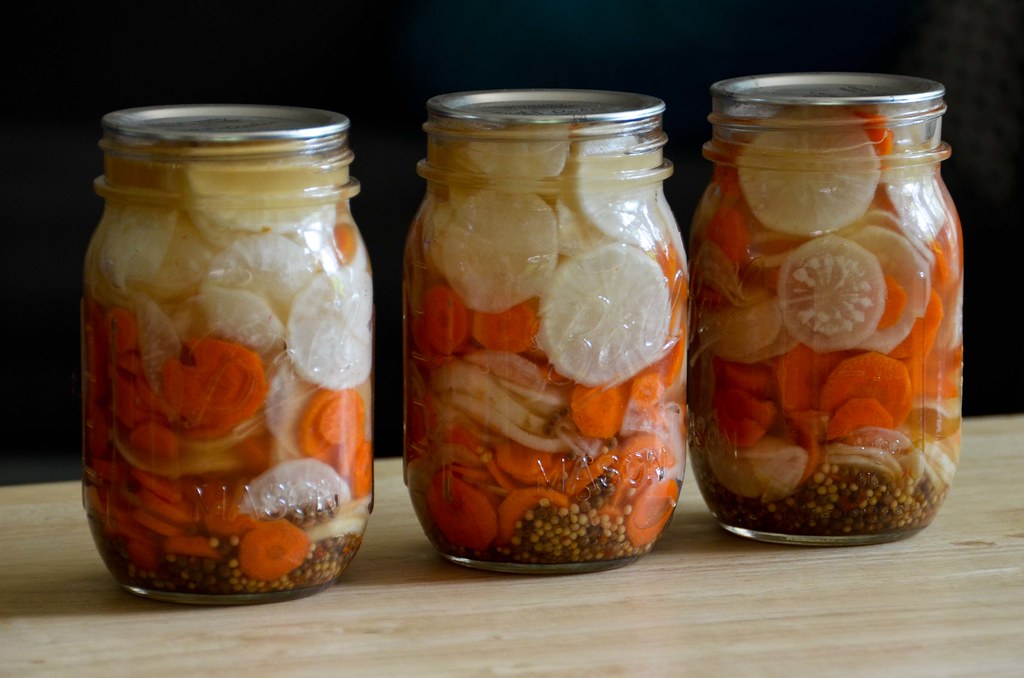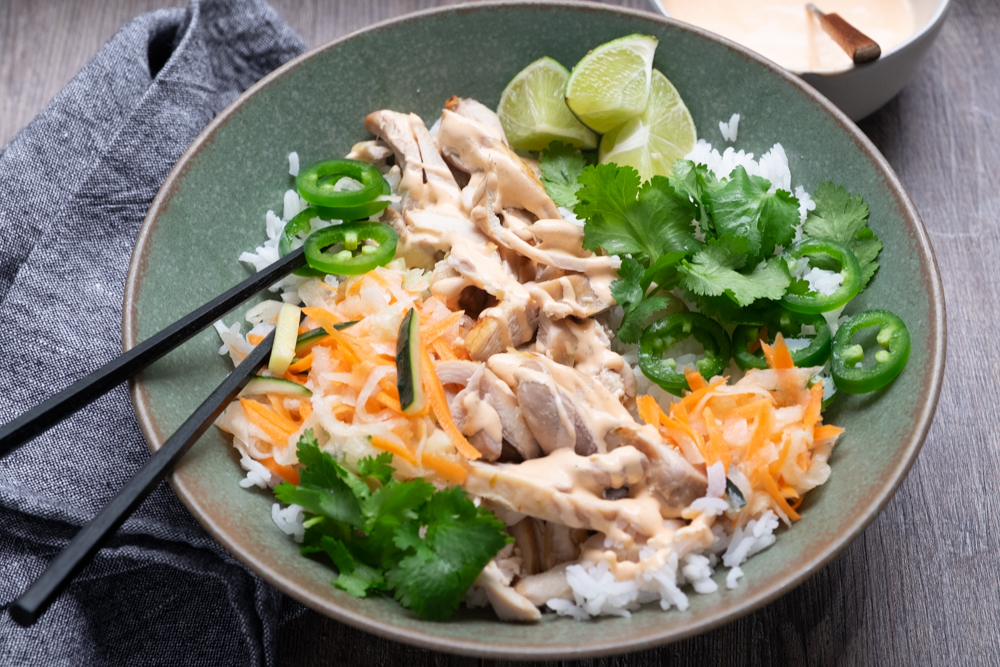Daikon, also known as winter radish or white radish, is a root vegetable native to Japan. Read on to learn more about daikon, its varieties, culinary uses, and much more.
What is Daikon?
Daikon is an edible root vegetable belonging to the Brassicaceae family. It is a versatile vegetable that comes in many different shapes, sizes, and colors. The most common daikon variety is white and elongated, similar in shape to a large carrot. Daikon is grown in many Asian countries, especially in Japan, China, Korea, and the Indian subcontinent. Daikon radish is usually white, thin-skinned, and smooth in texture. Moreover, it has a napiform shape that’s round and thick at the top end with a pointed bottom end.
Daikon Varieties
Although daikon and red radish belong to the same family, there are a few differences. White radish is elongated, slightly sweet, juicier, and mild-flavored, whereas red radish is much smaller, round-shaped, and sharper in flavor. Another daikon variety, mu, is a Korean radish that’s also white-colored, and resembles a potato in appearance. A Chinese daikon variety, called watermelon radish is known for its eccentric appearance. It’s green-skinned with a hot pink interior and offers the same crunch as that of Japanese red radish.

What Does Daikon Taste Like?
The taste of daikon is similar to a red radish but less peppery and intense in flavor. Raw daikon has a refreshing tanginess to it that’s coupled with a juicy crunch. Daikon resembles turnips in taste when cooked into meals, as their sweetness is enhanced with heat. Daikon radish offers the same crunch as that of a carrot and is often used in salads, and condiments to brighten up the meals.
Health Benefits of Daikon
Daikon is considered a nutritionally loaded low-calorie vegetable. Although it’s not high in fiber, it contains potassium, and some amounts of calcium, phosphorus, magnesium, and folate. It is believed that daikon has anti-bacterial, anti-inflammatory, and diuretic properties as well. Daikon radish is known to do wonders for your heart health and stabilizes the blood pressure levels, although these claims have not been medically tested. Furthermore, it’s rich in vitamin C, which can help in boosting your immunity.
Uses of Daikon
Raw daikon is often used in salads along with other root vegetables, cucumbers, tomatoes, and sometimes fruits. Moreover, some sides require boiled daikon chunks accompanied with spices, sauces, sesame oil, and chopped scallions on top. Try out our recipe for Lemongrass Chicken Bowl for an amazing daikon crunch.

Daikon pairs well with chicken, carrots, scallions, ginger, and garlic. Daikon radishes are a staple in Asian cuisine and are cooked into savory dishes like soups, oven-roasted preparations, and noodles. This refreshing vegetable can be used in place of any dish that asks for red radish, turnip, or carrot. You can easily swap daikon in our recipes for Spring Steak Salad, Cucumber Salad, and Salmon with Roasted Fennel and Radish.
Takuan or pickled daikon is a popular side dish from traditional Japanese cuisine that’s served at the end of meals as it is thought to help digestion. Daikon stir-frys and chips are other great ways of devouring this root vegetable. Slices of daikon radish can be eaten raw for a hearty crunch, accompanied by sweet dips like peanut butter. It can also be enjoyed lightly steamed with olive oil, salt, or lemon juice.
Feature Image: Flickr user Franco Folini ( CC BY-SA 2.0 )



